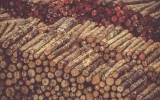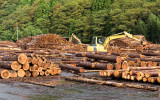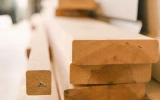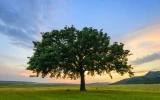What's the Value of Hardwood Timber per Acre?
One of the most important factors in determining the value of hardwood timber is the quality of the wood. High-grade sawtimber is typically more valuable than lower-grade wood, and its amount on your property will have a significant impact on the overall value of your timber. In this article, we'll help you find out the value of hardwood timber per acre.
An acre of hardwood timberland has a value between $2,000 and $50,000, depending on the species, age, and quality of the trees. Popular hardwood species like black walnut and cherry can command higher prices per acre, while more common species such as red oak and maple may have lower values.
If you want to know the value of your hardwood timber, you may also conduct timber cruising or hire a professional timber appraiser. Let's get to know more about these and how you can determine the true value of your hardwood timber.
Summary
- Black cherry is one of the most valuable hardwood species, with an estimated value per acre ranging from $5,500 to $7,500.
- A single large oak tree measuring 100 feet could be worth anywhere from $8,000 to $15,000 or more.
- An acre of 50 mature black walnut trees can have a value of as much as $50,000.
- Small hardwood trees, which are typically less than 12 inches in diameter, are valued at $500 to $1,000 per acre and are often used for pulpwood or firewood.
- Very large hardwood trees are highly prized at $5,000 to $10,000 per acre, which can be used for high-end furniture and other luxury wood products.
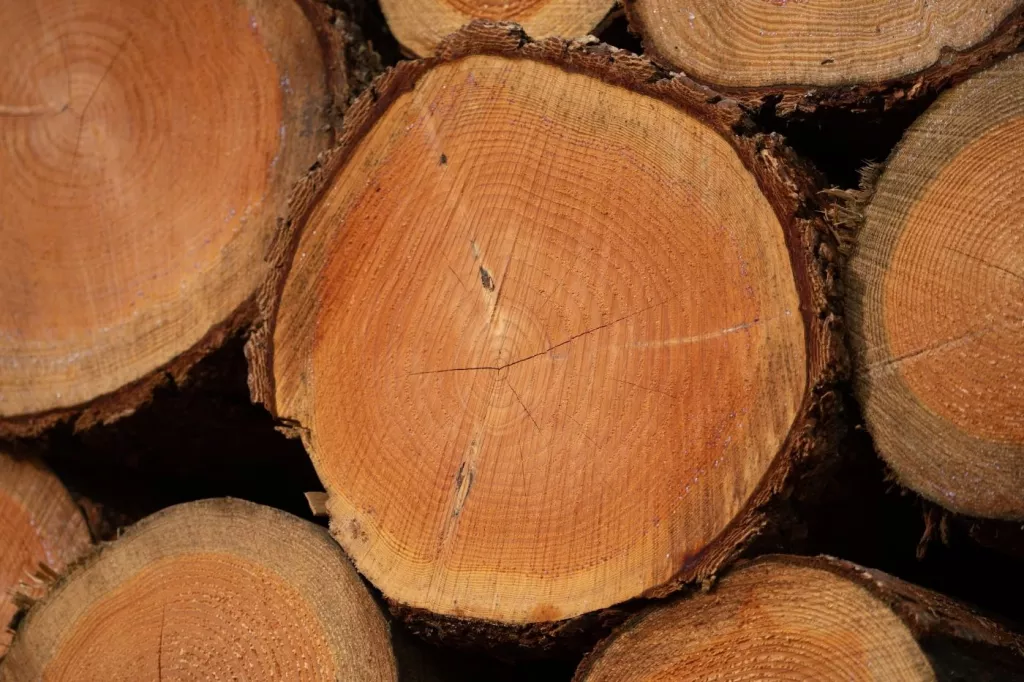
On this page:
Species of Hardwood Timber and Their Estimated Value per Acre
Some species, such as black walnut and cherry, are highly valued for their wood and can command a higher price per board foot. Other species, such as red oak and maple, are more common and have a lower value.
| Species of Hardwood Timber | Estimated Value per Acre |
|---|---|
| Black Cherry | $5,500 - $7,500 |
| Black Walnut | $3,000 - $4,000 |
| Hard Maple | $3,000 - $4,000 |
| Red Oak | $2,000 - $3,000 |
| White Oak | $2,500 - $3,500 |
| Hickory | $1,500 - $2,500 |
| Ash | $1,000 - $2,000 |
| Beech | $1,000 - $1,500 |
The estimated value per acre of black cherry timber
The estimated value per acre for black cherry ranges from $5,500 to $7,500, depending on the quality of the timber.
Black cherry is a high-value hardwood species that is prized for its beautiful reddish-brown heartwood. It is commonly used for furniture, cabinets, and decorative veneers.
In addition to its aesthetic appeal, it is also a popular choice for its durability and resistance to decay, making it a valuable investment for landowners.
The estimated value per acre of black walnut timber
Black walnut is a premium hardwood species that is native to North America. It is highly valued for its rich, dark color and unique grain patterns, which make it a popular choice for high-end furniture, flooring, and decorative woodwork.
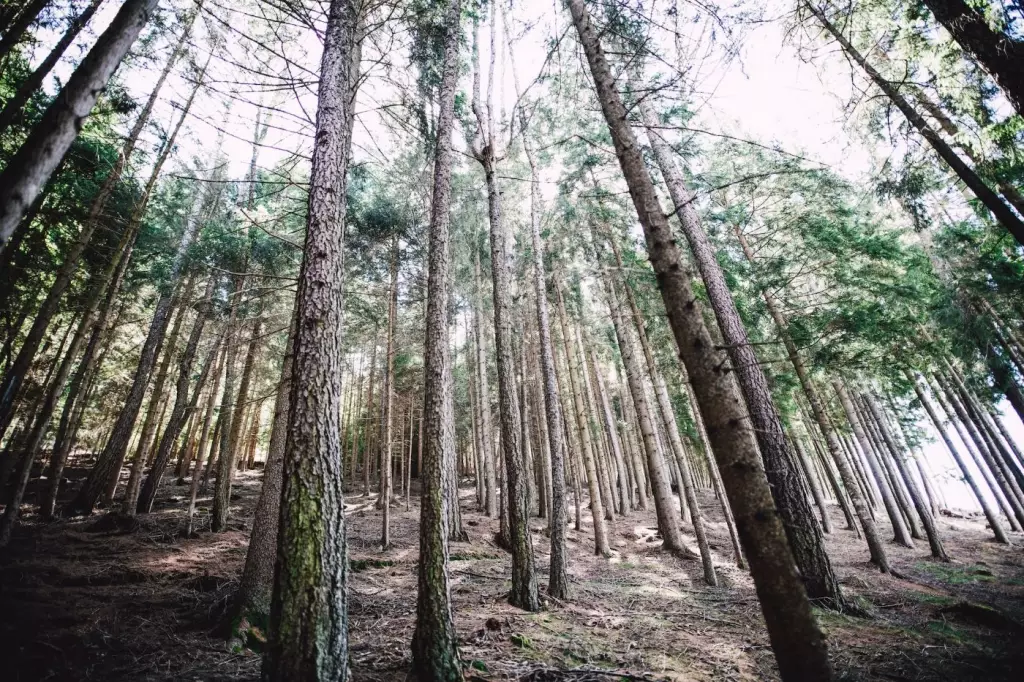
The estimated value per acre for black walnut timber ranges from $3,000 to $4,000. An acre of 50 mature black walnut trees can have a value of as high as $50,000.
In addition to its commercial value, black walnut is also an important species for wildlife and forest ecosystems. The nuts produced by black walnut trees are a valuable food source for many species of wildlife, and the trees themselves provide important habitat and shelter for a variety of birds and mammals.
The estimated value per acre of hard maple timber
Hard maple is a dense, strong hardwood that is commonly used for flooring, furniture, and butcher blocks. Its timber value ranges from $3,000 to $4,000 per acre.
It is prized for its light color and tight grain pattern, durability, and resistance to wear and tear, making it an ideal choice for high-traffic areas. Its hardness also makes it difficult to work with hand tools, so it is typically processed with power tools.
When harvested, hard maple logs are typically sawn into lumber and then kiln-dried to reduce moisture content and prevent warping or cracking. The lumber is then graded based on the quality of its appearance and strength and is used for a variety of applications, including flooring, cabinetry, and musical instruments.
The estimated value per acre of red oak timber
The red oak wood has an estimated value ranging from $2,000 to $3,000 per acre. Red oak is a common hardwood species that is widely used for flooring, furniture, and cabinets.
It is prized for its strength and durability and is also known for its attractive grain patterns and warm reddish-brown color.
It is a popular choice for flooring because it is resistant to wear and tear, and it can be sanded and refinished multiple times to maintain its appearance. Red oak is also commonly used for furniture and cabinets because it is easy to work with and takes stain well.
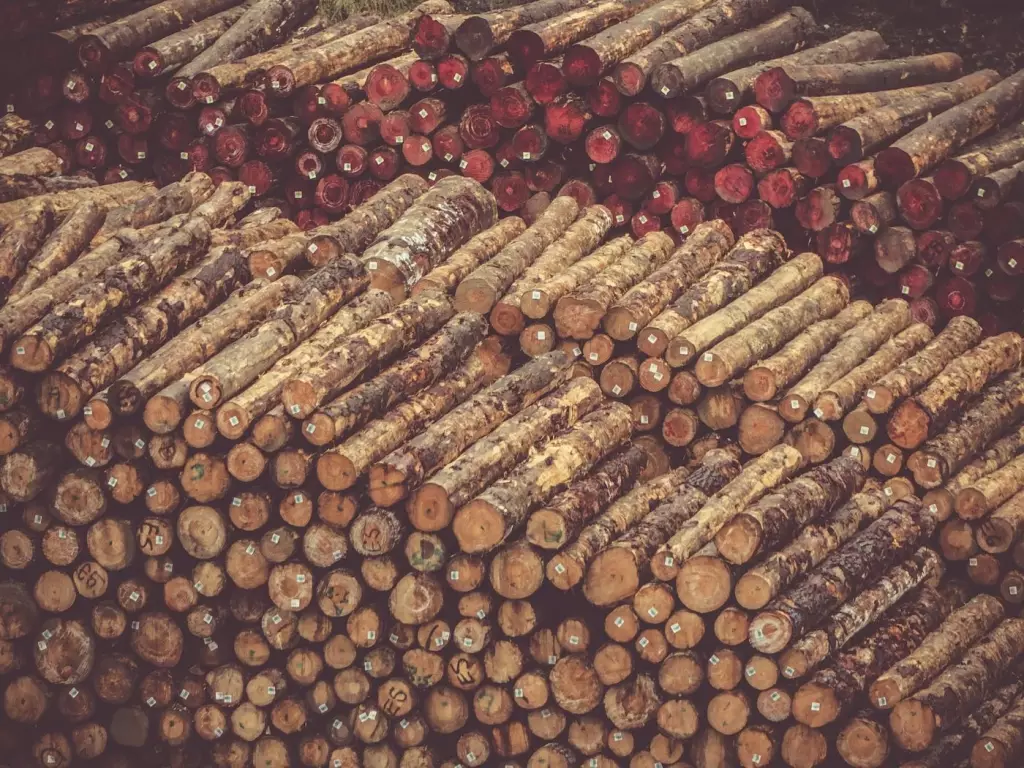
The estimated value per acre of white oak timber
White oak timber is highly valued for its strength, durability, and resistance to decay. It is a popular choice for a variety of applications, including flooring, furniture, and barrels for aging wine and whiskey.
It is also commonly used in construction and shipbuilding due to its toughness and ability to withstand harsh environments.
White oak trees typically grow slowly, taking up to 150 years to reach maturity. As a result, it is considered a long-term investment, with the potential for significant returns over time.
Proper management and harvesting techniques can help to ensure the sustainability of white oak forests, while also maximizing the value of the timber. The worth of a single large oak tree measuring 100 feet could be anywhere from $8,000 to $15,000 or more.
The estimated value per acre of hickory timber
Hickory trees typically take about 40 to 50 years to mature, and the larger the tree, the more valuable the timber. On average, the estimated value per acre for hickory ranges from $1,500 to $2,500.
Hickory is a dense, strong hardwood that is commonly used for tool handles, furniture, and flooring. It is prized for its strength and durability.
Clear, straight-grained hickory wood with minimal knots and defects is more valuable than wood with imperfections. The market demand for hickory timber can also affect its value, with higher demand leading to higher prices.
The estimated value per acre of ash timber
Ash is a strong, lightweight hardwood that is commonly used for furniture, flooring, and sports equipment. It is prized for its flexibility and shock resistance.
The estimated value per acre for ash ranges from $1,000 to $2,000. This value can vary depending on several factors such as the location of the timber, the quality of the wood, and the demand for ash products in the market.
Ash trees typically grow in the eastern and central regions of North America, making them a valuable resource for the forestry industry in those areas.
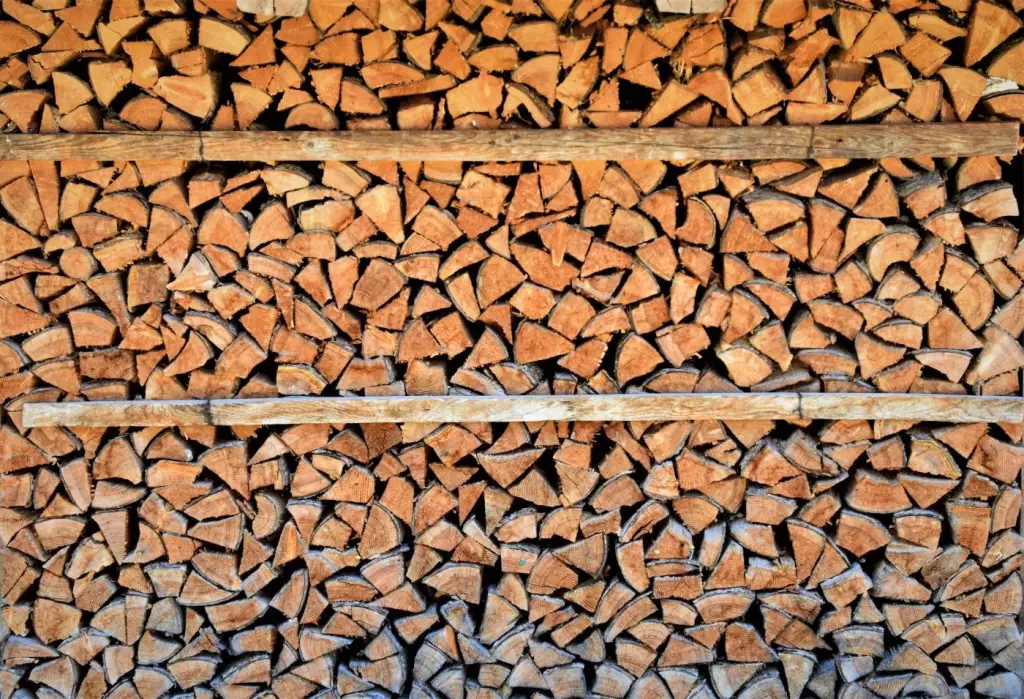
However, in recent years, the emerald ash borer beetle has caused significant damage to ash trees, leading to a decrease in the supply of ash timber and an increase in its value.
The estimated value per acre of beech timber
Beech is a light-colored hardwood that is commonly used for furniture, flooring, and veneers. It is prized for its smooth texture and even grain pattern. The estimated value per acre for beech ranges from $1,000 to $1,500.
Beech timber that is of higher quality and located in areas with easy access to transportation and processing facilities can fetch a higher price than lower-quality timber or timber located in more remote areas.
Additionally, market conditions such as supply and demand and economic factors can also impact the value of beech timber. It is always important to consult with a professional forester or timber buyer to get an accurate estimate of the value of your beech timber.
If you want to start growing hardwood trees by yourself, here are 13 examples you can start with that can give you the most profit.
Value per Acre of Different Sizes of Hardwood Trees
The size of the trees also plays a role in determining the value of hardwood timber. Larger trees typically yield more lumber and are therefore more valuable. However, larger trees also tend to have more defects such as knots and splits, which can lower their value.
| Tree Size | Estimated Value per Acre |
|---|---|
| Small | $500-$1,000 |
| Medium | $1,000-$2,500 |
| Large | $3,000-$5,000 |
| Very Large | $5,000-$10,000 |
The estimated value per acre of small hardwood trees
Small trees, which are typically less than 12 inches in diameter, are valued at $500 to $1,000 per acre. These trees are often used for pulpwood or firewood and are not typically used for high-quality lumber.
Although, if used, they are often more uniform in shape and size, which can make them easier to process into high-quality lumber.
They tend to have fewer defects, which can increase their value. However, since smaller trees yield less lumber, which means that landowners may need to harvest more trees to achieve the same amount of wood products as larger trees.
The estimated value per acre of medium-sized hardwood trees
Medium-sized trees, which range from 12 to 16 inches in diameter, are valued at $1,000 to $2,500 per acre. These trees are often used for lumber and can produce high-quality wood products.
Compared to smaller trees, medium-sized hardwood trees may have denser wood, which is stronger and more durable. This is because medium-sized trees have had more time to grow and mature, which allows the wood to become denser and stronger.
Additionally, medium-sized trees may have a more uniform shape and size, which can make them easier to process into high-quality lumber.
Also, compared to larger trees, medium-sized hardwood trees may have fewer defects such as knots and splits. This is because larger trees tend to have more defects as a result of their age and exposure to environmental factors.
The estimated value per acre of large hardwood trees
Large hardwood trees are highly valued for their lumber and can produce high-quality wood products such as furniture and flooring. They are usually 16 to 24 inches in diameter and are valued at $3,000 to $5,000 per acre.
Larger trees are usually more valuable because they have a larger volume of wood that can be harvested and processed into lumber, resulting in more wood products that can be sold.
However, they also tend to have more defects such as knots and splits, which can lower their value. These defects can make it more challenging to process the wood into high-quality lumber, which can reduce the amount of usable wood that can be harvested from the tree.
Additionally, larger trees are often older and may have been exposed to environmental factors such as insects, disease, or damage from storms, which can affect the quality of the wood.
The estimated value per acre of very large hardwood trees
Very large trees, which are over 24 inches in diameter, are valued at $5,000 to $10,000 per acre. These trees are rare and highly prized for their high-quality lumber, which can be used for high-end furniture and other luxury wood products.
Very large trees have denser wood, which is stronger and more durable than wood from smaller trees. However, they may also have more defects such as knots and splits, which can lower their value.
Other Ways to Calculate the Value of Hardwood Timber per Acre

To determine the market value of your hardwood timber, here are other ways to compute its value:
Conduct timber cruising
Timber cruising is the process of estimating the volume and quality of timber on your land. This is typically done by walking through the forest and taking measurements of the trees.
The measurements can include the diameter at breast height (DBH), height, and species of each tree. Once you have the measurements, you can use a volume table to estimate the total volume of timber on your land. This will give you an idea of the total board feet of timber you have available.
Hire a professional timber appraiser
After you have estimated the volume and quality of timber on your land, you can hire a professional timber appraiser to determine the value of your timber.
The appraiser will take into account factors such as the species, volume, and quality of the timber, as well as current market conditions.
The appraiser will provide you with a detailed report that includes the value of your timber per board foot and the total value of your timber per acre. This information can be useful if you are considering selling your timber or using it as collateral for a loan.
Increasing the Value of Your Hardwood Timber
In this section, we will give you ways you can help ensure that your timber is healthy and of high quality, which can increase its value:
Practice sustainable forestry
Sustainable forestry practices involve managing your timberland in a way that balances your need for timber with the long-term health of the forest ecosystem. This can involve things like:
- Conducting regular forest inventories to assess the health and composition of your timber stands
- Implementing harvesting techniques that minimize damage to the forest floor and surrounding trees
- Planting new trees to replace those that have been harvested
- Managing invasive species that can harm the forest ecosystem
- Protecting water quality by minimizing soil erosion and runoff
Timber stand improvement
Timber stand improvement (TSI) involves implementing practices that improve the health and quality of your timber stands. This can include things like:
- Thinning overcrowded stands to promote the growth of larger, higher-quality trees
- Removing diseased or damaged trees to prevent the spread of disease
- Pruning lower branches to increase the value of the timber
- Controlling competing vegetation to reduce nutrient competition and improve tree growth
